Biking Rural Japan
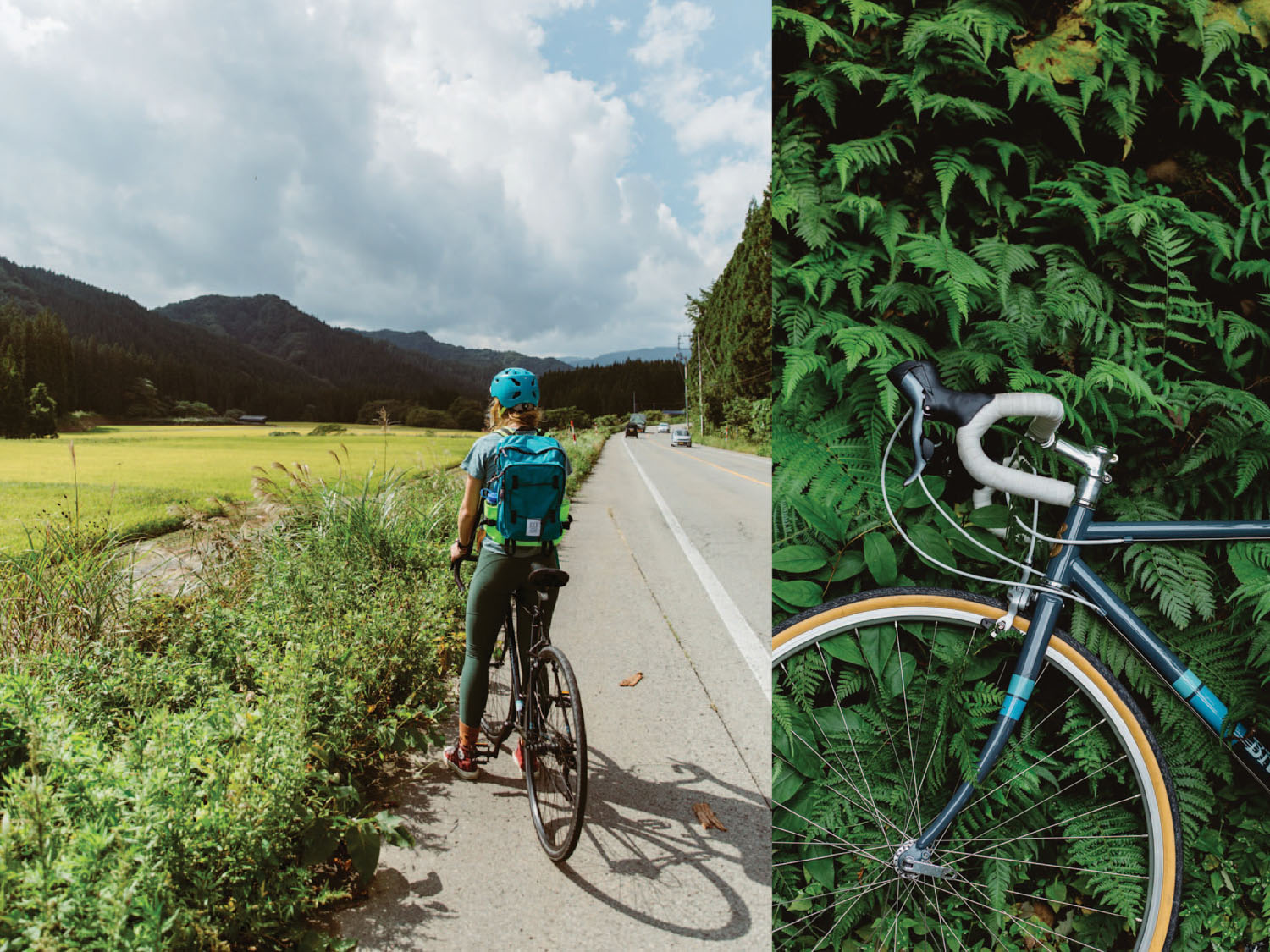
Biking Rural Japan
Akita, Japan
By Jules Davies
If I had to permanently attach my identity to any one thing in this life, it would be a deep love for hot springs. I’m talking about relaxing your body and mind in hot water heated by Mama Earth, surrounded by Mama Earth. Japan and I are on the same page here. As a volcanically active country, Japan has thousands of hot springs, aka onsens, scattered throughout all of it’s major islands. They’ve turned the act of bathing into the art of bathing and It was time for me to get in on it!
This Fall, I had the opportunity to spend a few weeks traveling around Japan, riding bikes and taking photos with Papersky Magazine.
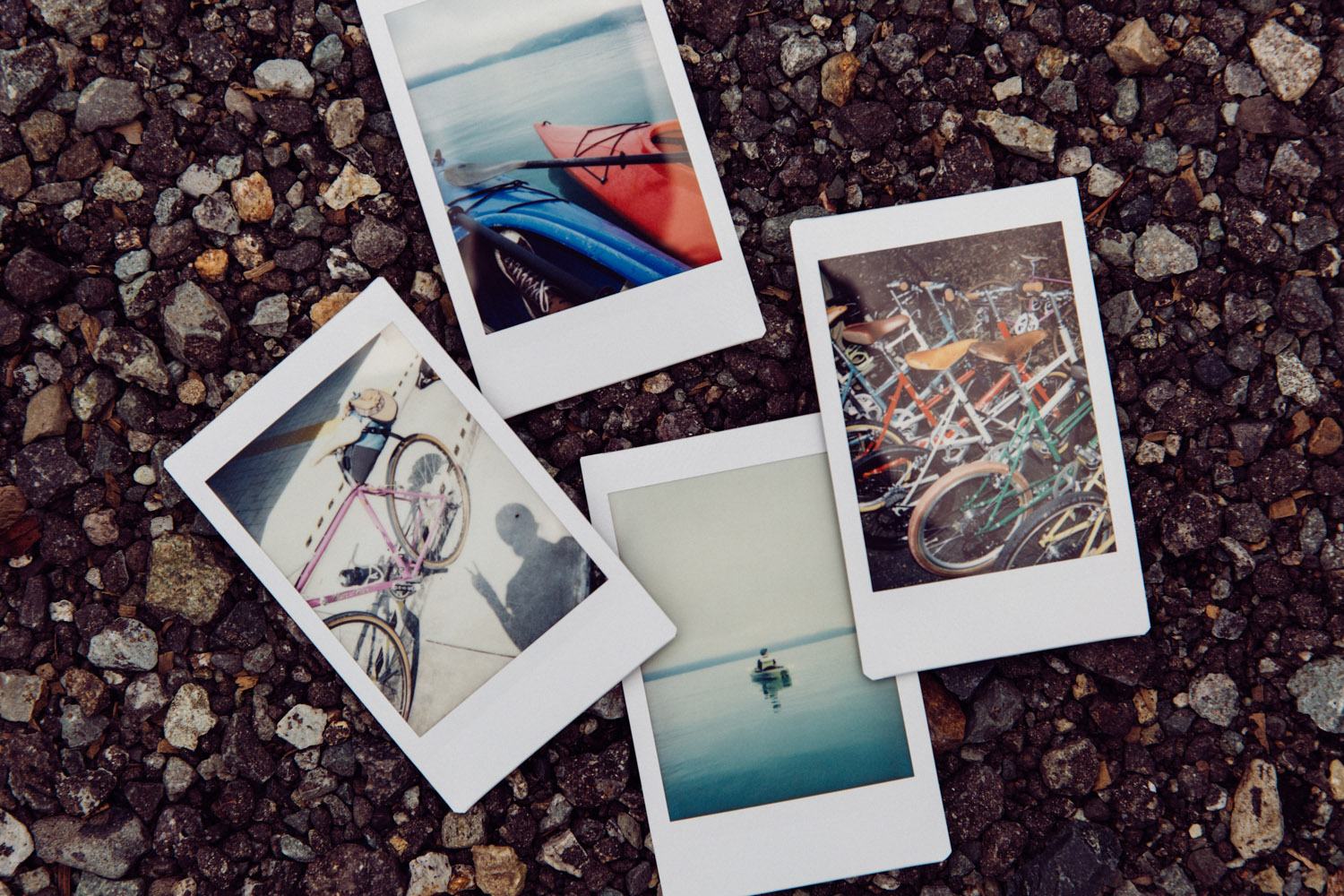
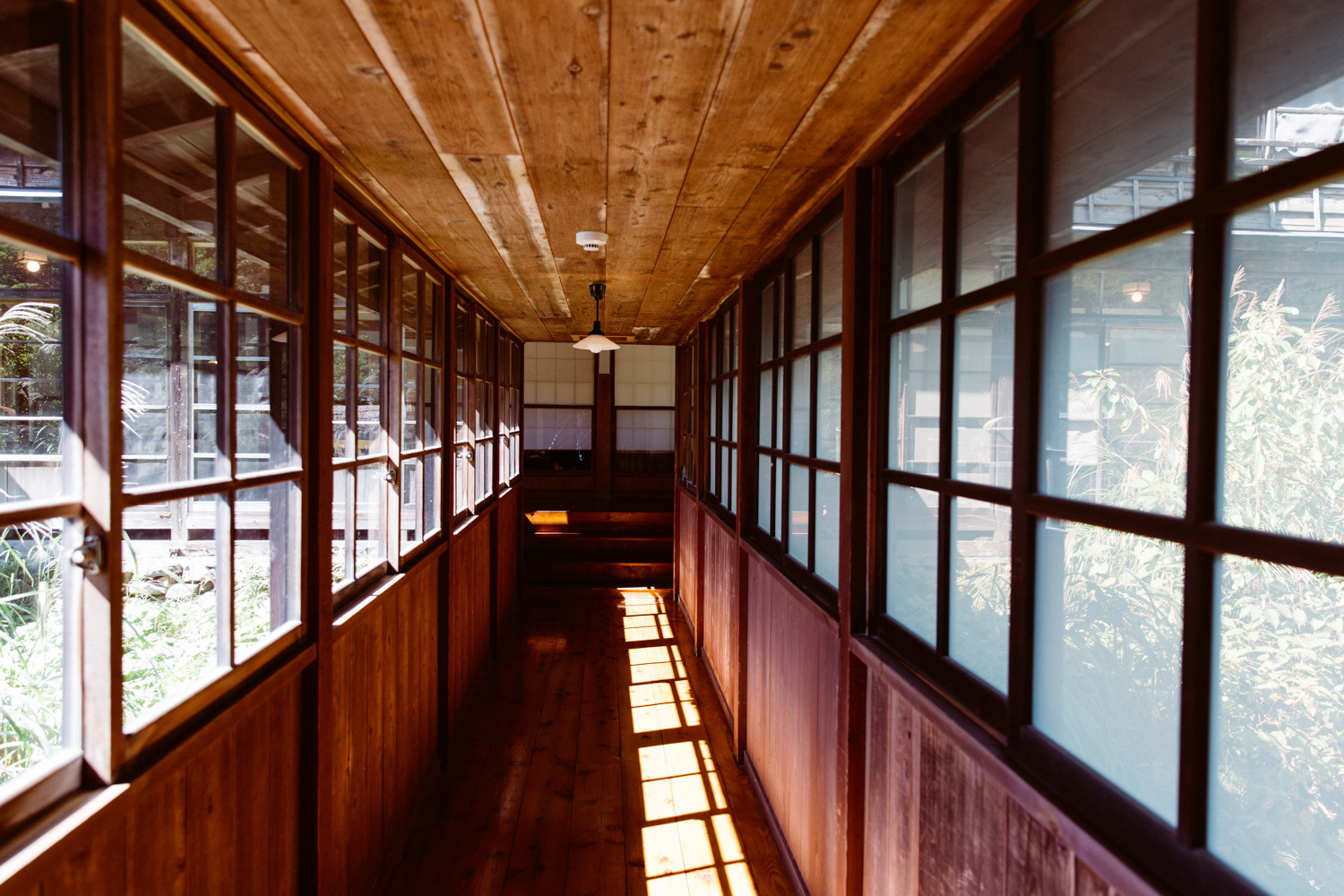
I met the husband and wife team behind Papersky, Kaori and Lucas, a few years ago when they were passing through Colorado, discovering and documenting the best rustic hot springs and bouldering spots across the state. Each issue of their Japanese travel and culture magazine explores a specific country or city, diving into the subcultures that thrive there. They’re total nerds, in the very best sense of the word – people who turn an interest into a passion and rock out on it. We bonded over a shared love for natural hot water and Japanese outdoor fashion and have since collaborated on a handful of creative projects and photoshoots all over the US.
Along with their printed publication, they plan a bicycle trip a few times a year called the Tour de Nippon, which brings together a rag-tag crew of travelers to explore one of Japan’s rural districts by bike. It’s all about discovering the magic of a region – their inhabitants, nature, culture and food. They invited me to come out and shoot it this year and I jumped in.
Because JAPAN! BIKES! MOUNTAINS!
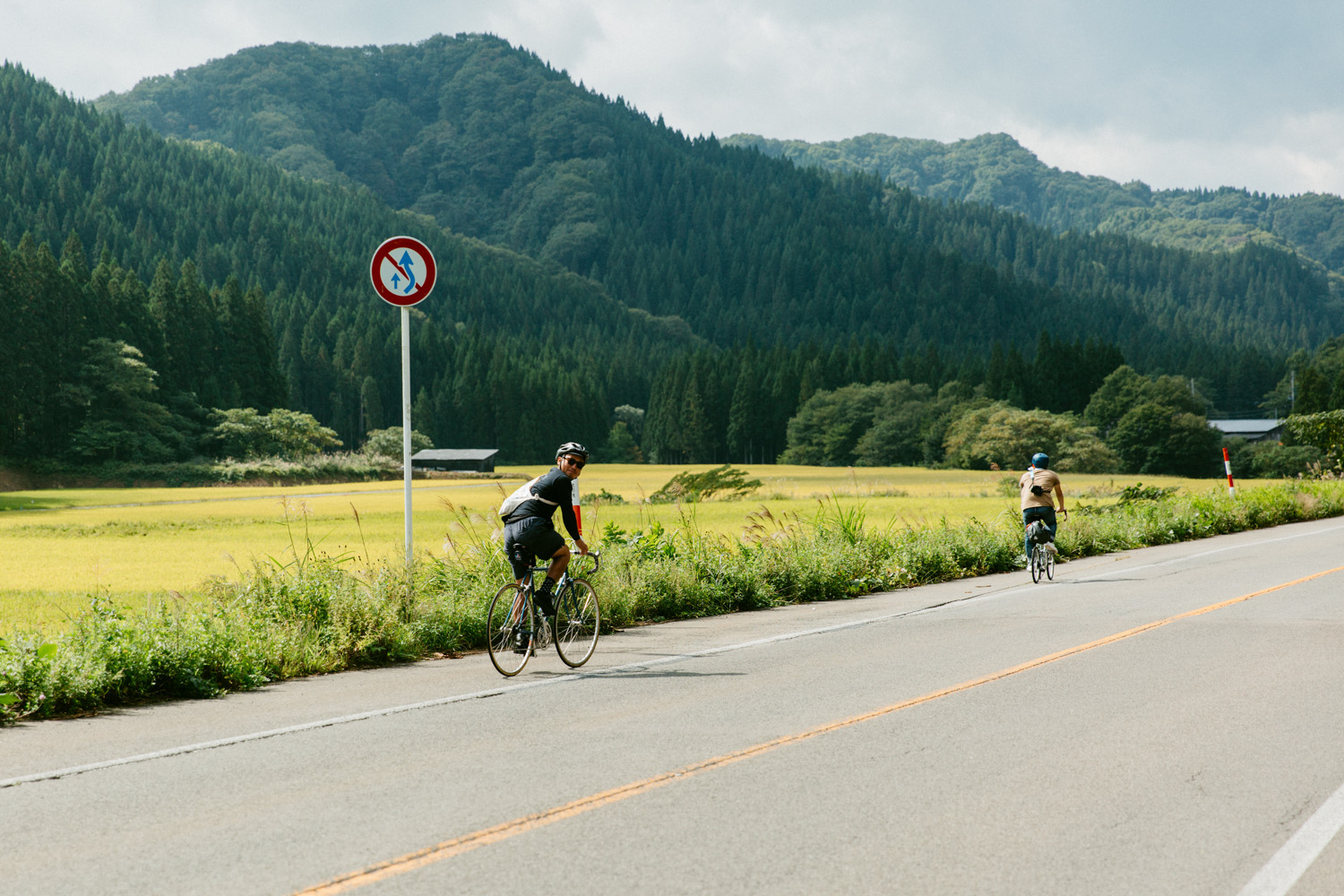
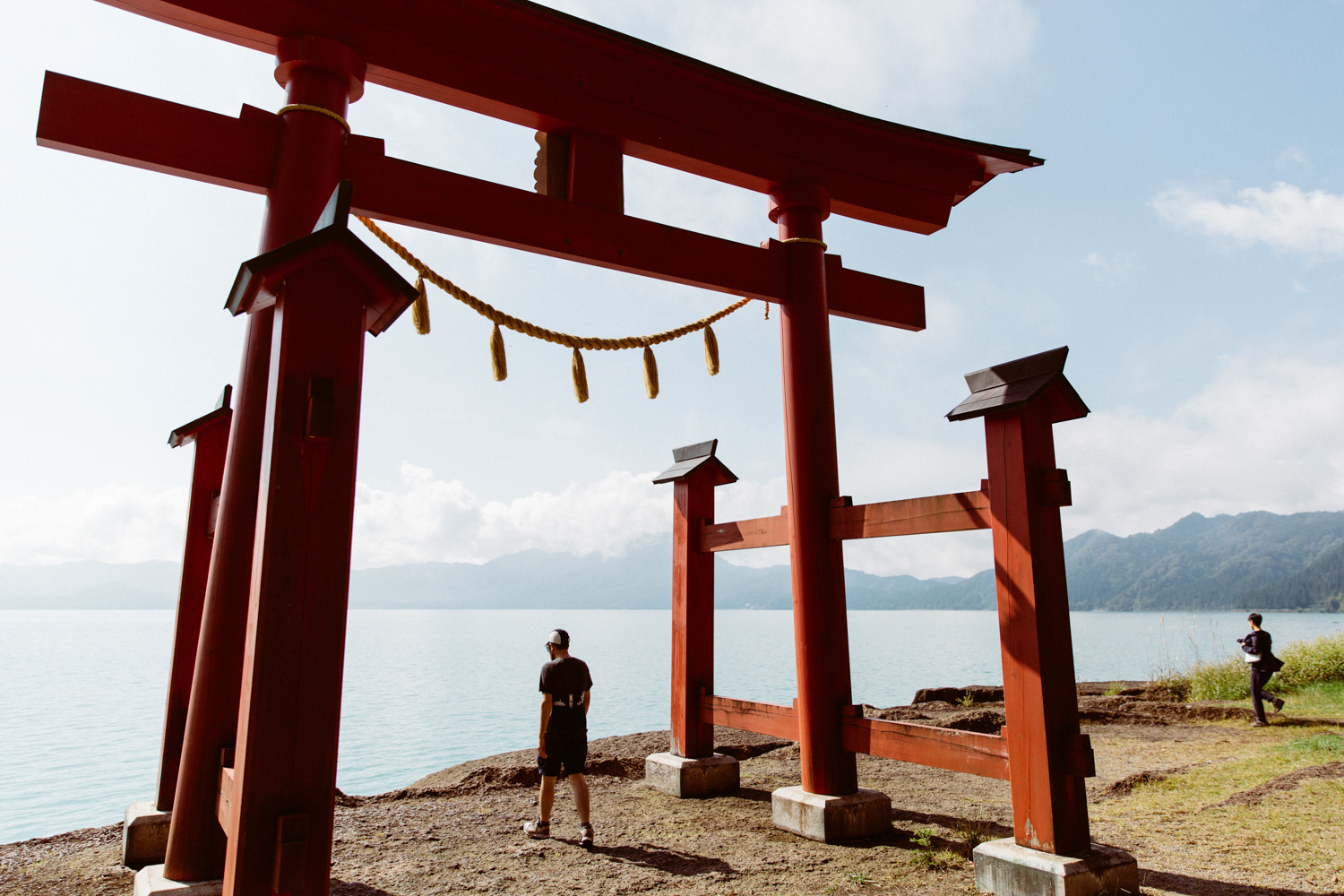
The journey took place in Akita (Ack-ee-tah), a northern prefecture that’s known for it’s beautiful mountains and lakes, endless rice fields, mineral-rich onsens, and – can’t forget – the Akita dog breed that originated there. I got off the bullet train from Tokyo and was greeted by lush greenery and my fellow riders – a group of people who’d travelled from all over Japan, China, South Korea, and Europe.
For 3 days we pedaled quiet roads through the countryside, stopping along the way to see, taste, do, be. The rice fields were just weeks away from harvest and glowing chartreuse yellow with anticipation. We slept in rustic forest cabins, kayaked Lake Tazawa, and ate bear soup – black bears are plentiful and hunted like deer there.
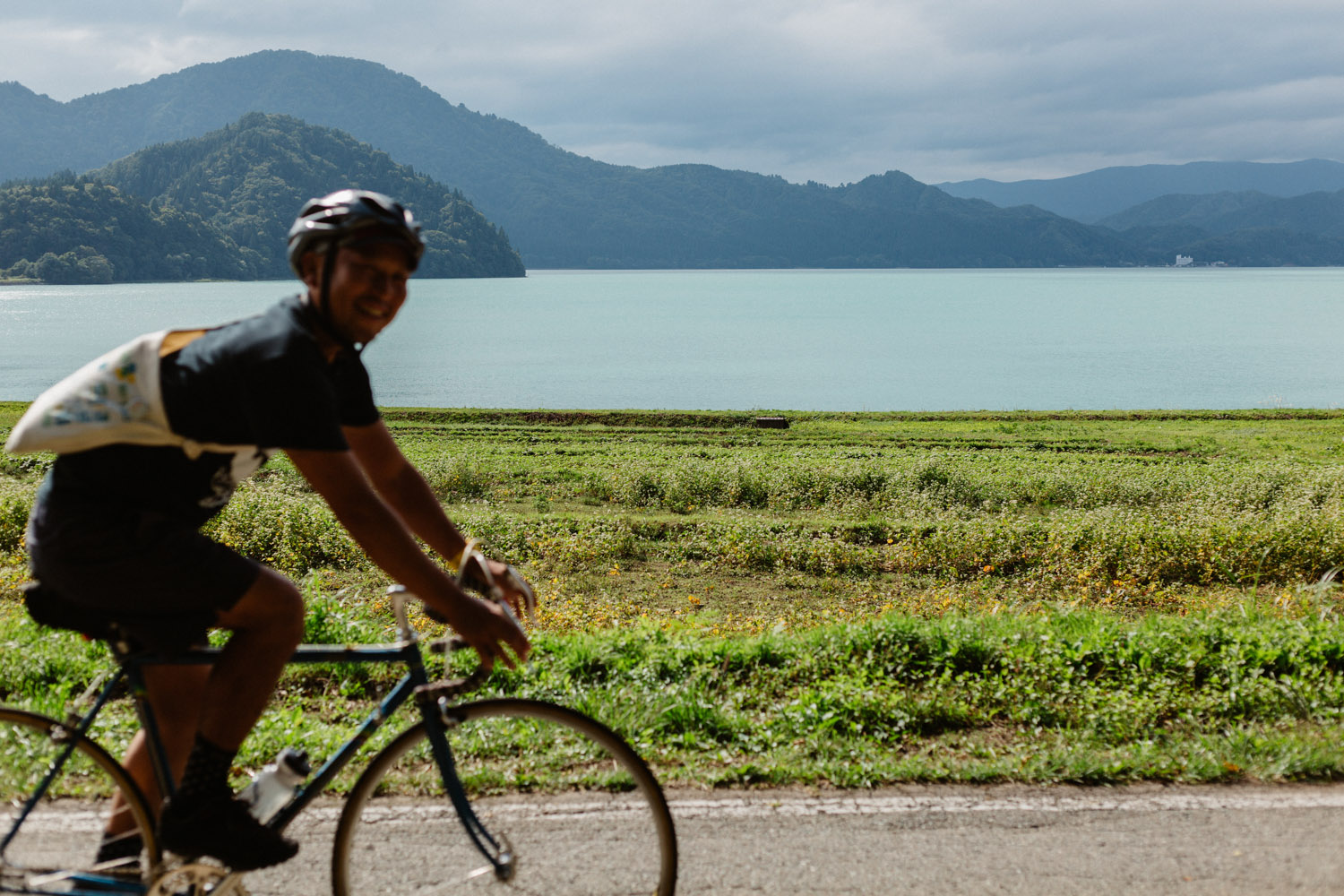
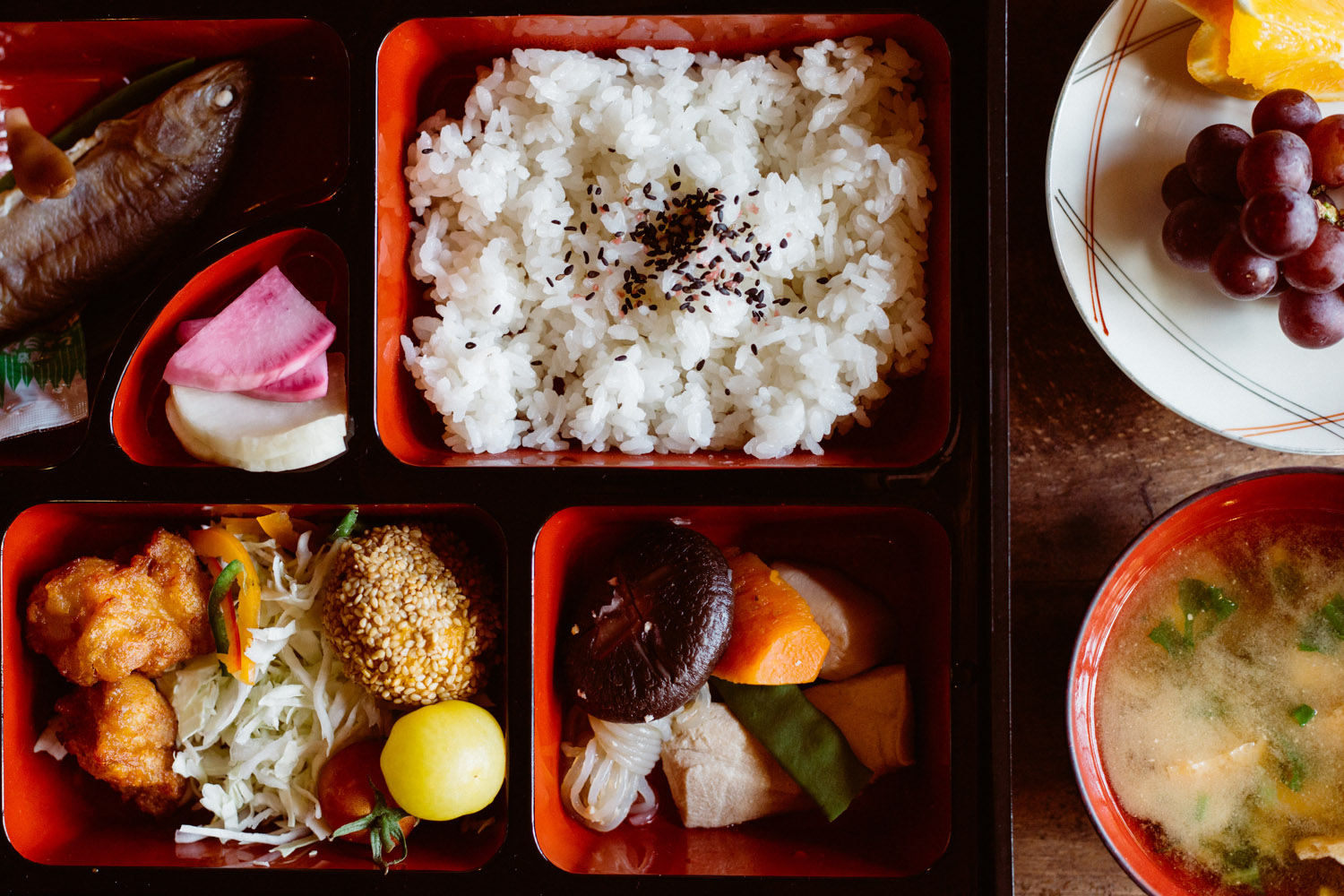
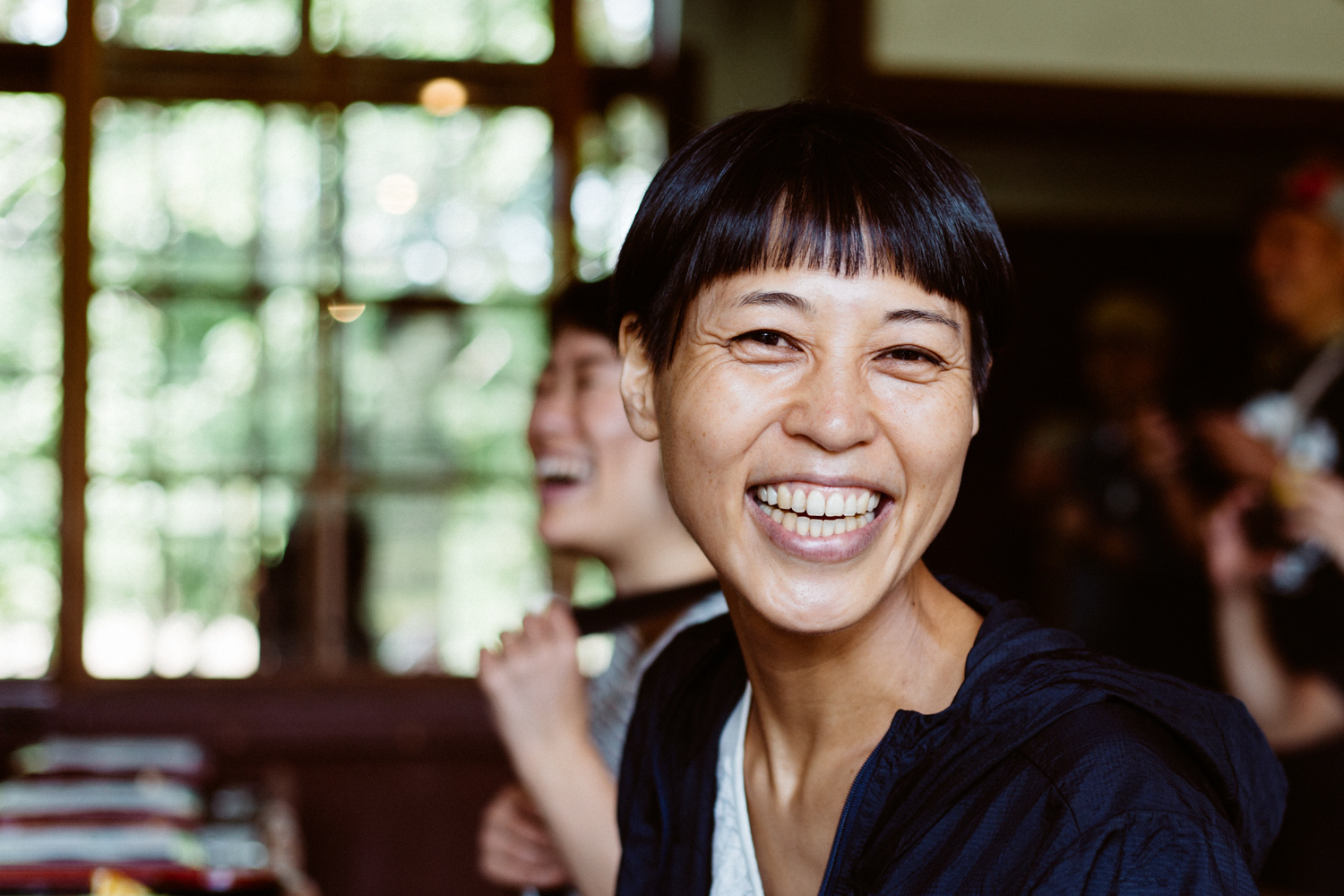
We got hot and sweaty in a Finnish tent sauna and then cold plunged in the lake.
We sat together over bento boxes and danced around language barriers with sweet smiles.
We soaked our bones in hot water, nudie and naked, walls down.
It was a traditional onsen tucked in the mountains of Akita, our second dip of the trip. The hot spring pool was about the size of two moose, surrounded by damp forest on 3 sides and a wooden bath house rounding the 4th. There were 3 generations of women bathing together – ritualistically, mindfully. In the Sento faith, the water is God. So is the mountain. And the river. And the trees and the sky. (AGAIN, Japan, I FEEL YOU). The stone basin was filled with blue water so milky and mineral-rich, you’d lose sight of your hand 10 inches down. We sat in silence with our eyes closed, allowing the water to soothe our muscles, tired from the monster hill we climbed to get there – 40 minutes of steady uphill riding. The logic was good: get your ass kicked and then warm it right up. Hot cross buns.

On day 2 we pulled into a small town for lunch, bento boxes, cooked special for us by the village ‘mothers and grandmothers’. We parked our bikes, walked into the community center, and ate cross-legged on the tatami floor. I got to talking with one of our hosting ‘grandmothers’:
She overheard my American English and was curious about my story – curious what initiated my journey to northern Japan to ride bikes with this Japanese crew.
With a little translation help from Kaori, we were able to communicate the necessary bits. She smiled and nodded and then began telling me about her hometown and why it was special, like it was her duty to do so when presented with an attentive foreigner. Turns out, they have special chestnut trees that bear the biggest chestnuts in all of Japan. They’re ‘very famous’ for it, she told me.
Big chestnuts.
As soon as she said it, I started noticing a cartoon chestnut character adorning the bulletin boards and tourism pamphlets. This chestnut mascot is also the one who encourages you to ‘slow down’ on the municipal road construction signs.
This idea delighted me – the way Japanese culture takes something small-but-unique and infuses it with pride and tradition, driven by locality. In the US we bond with our communities over sports teams and in Japan they bond over big chestnuts.
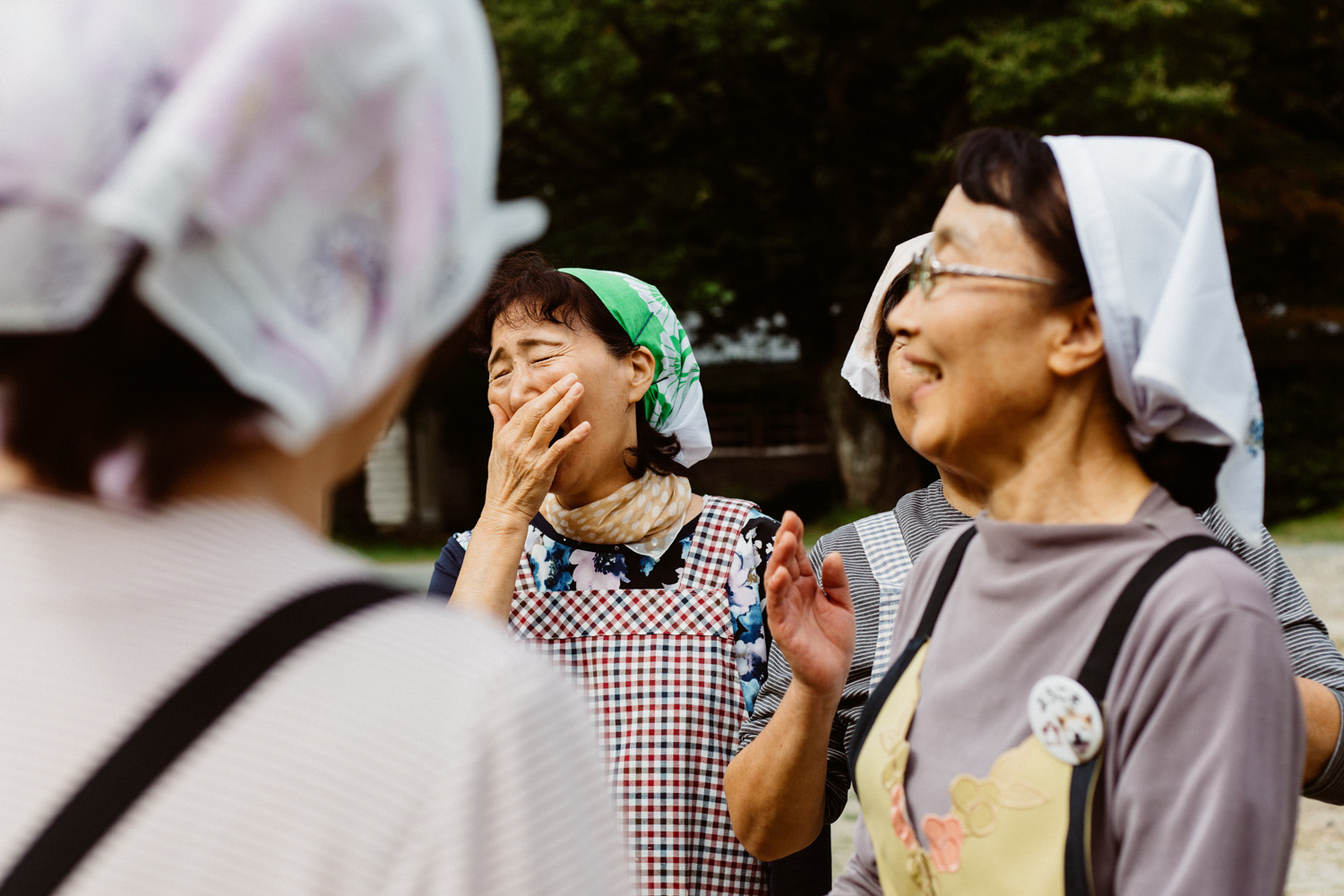
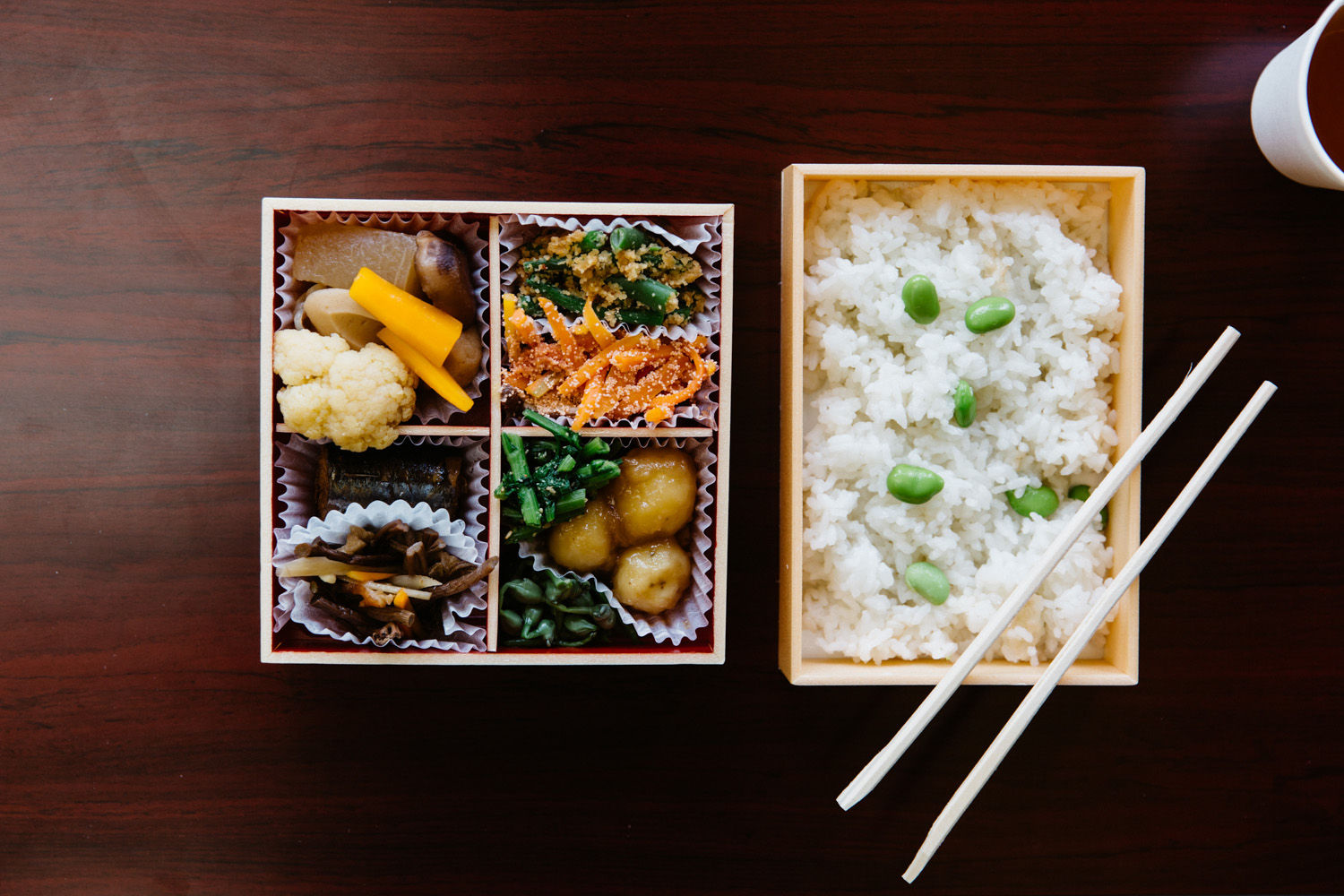
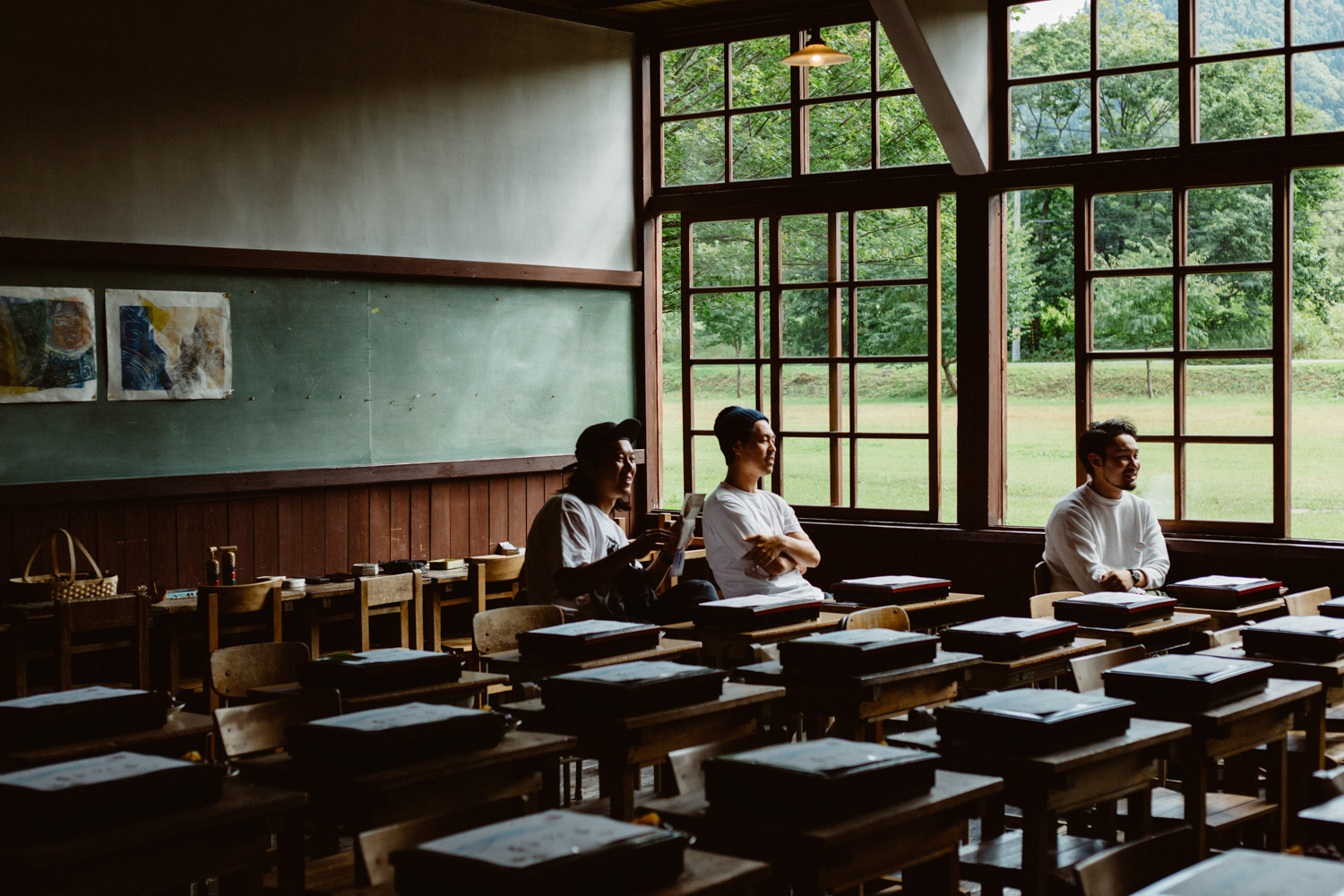
We pedaled through another region that was renowned for growing top-notch buckwheat for top-notch soba noodles. And another that had been perfecting the art of honey production. We tasted a variety of samples with very distinct flavor profiles, informed by which flowers and trees the bees had pollinated. See? Nerds. Lovely, wonderful nerds. If you’re interested in slow travel and desire to get off the beaten path, Papersky is planning Tour de Nippon rides in Shizuoka, Okinawa, and Hokkaido this year. You can check out the short film from our Akita ride here and stay up-to-date on upcoming rides here. Ride on babies, send pics!
The Japanese perspective and way of life is such a joy to witness and unfold slowly – a dynamic blending of rich history and progressive modern culture. You set foot in Tokyo and you’re in the future. A hi-tech and shiny future that’s brimming with innovation, organization and impeccable cleanliness. A place where 14 million people cohabitate with courtesy and kindness. A place where everything works.
Then you arrive in the countryside and you feel like you’re on the film set of a 19th century period piece. You see women walking down the street wearing a yukata kimono and wooden sandals because that’s what she wears. Because that’s what her mother wore. And her mother and her mother. Your guest room consists of two items – a grounded futon on the tatami floor and a kettle for tea. Pour it hot, sip it slow and lose yourself in the zen romance of it all.
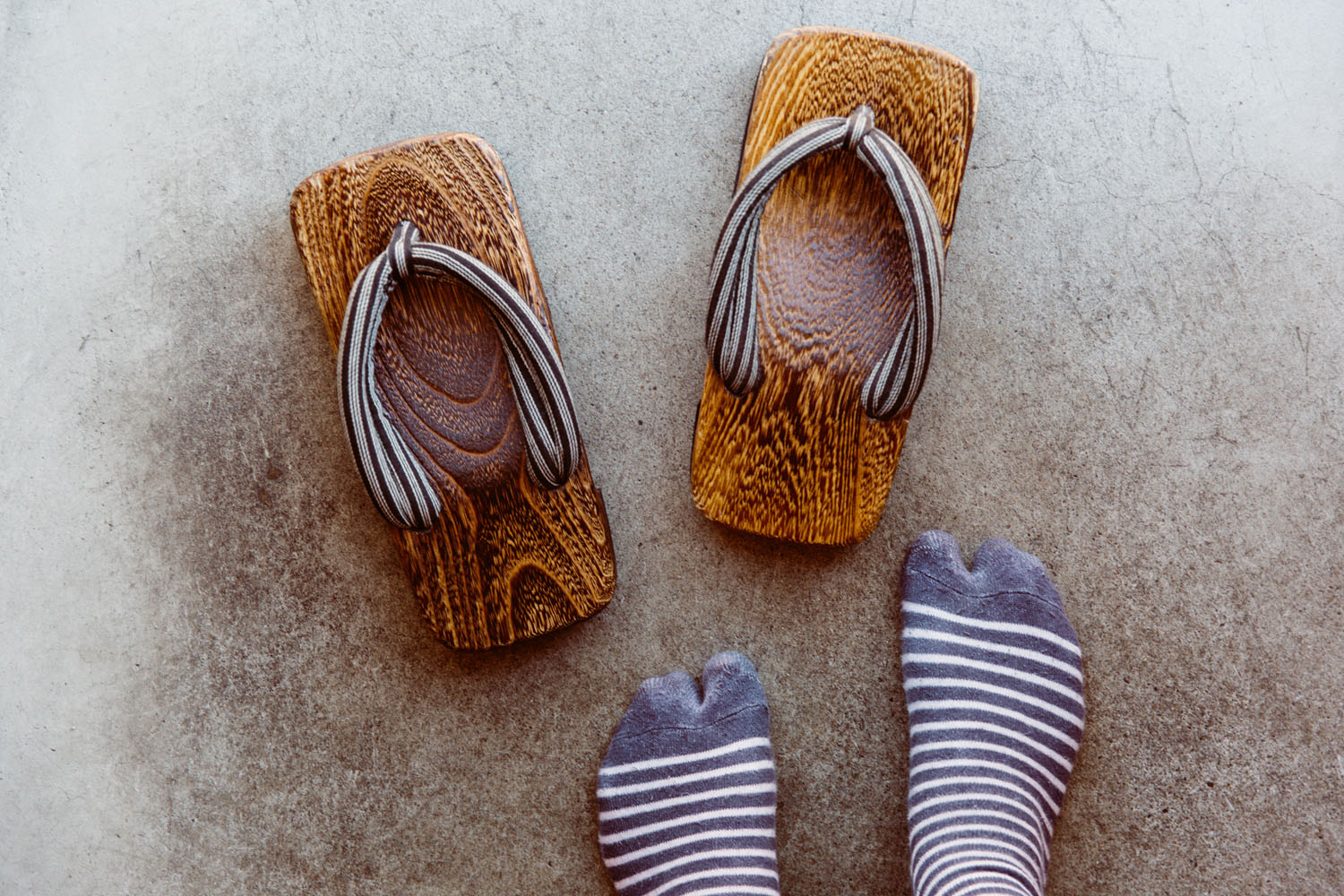
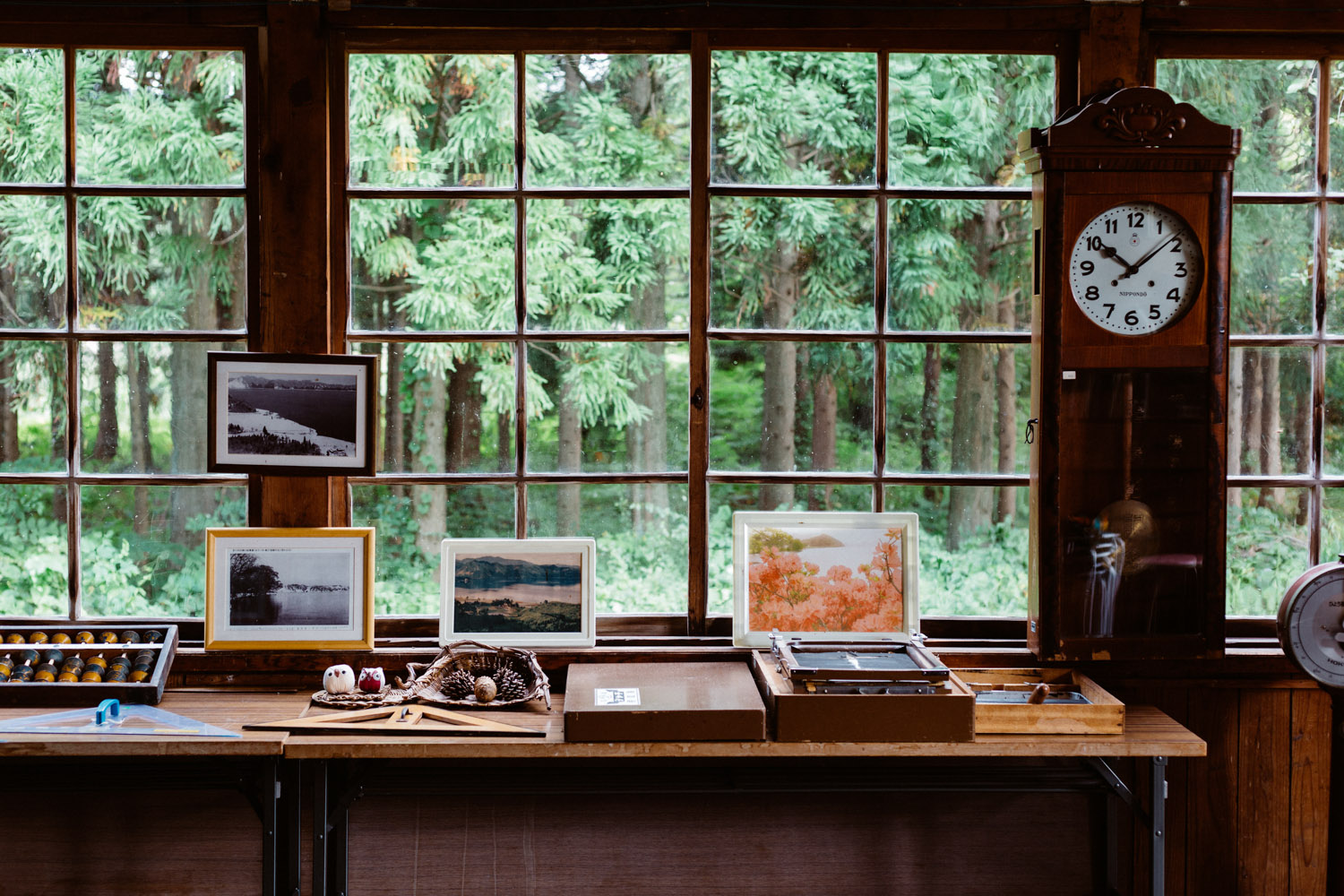
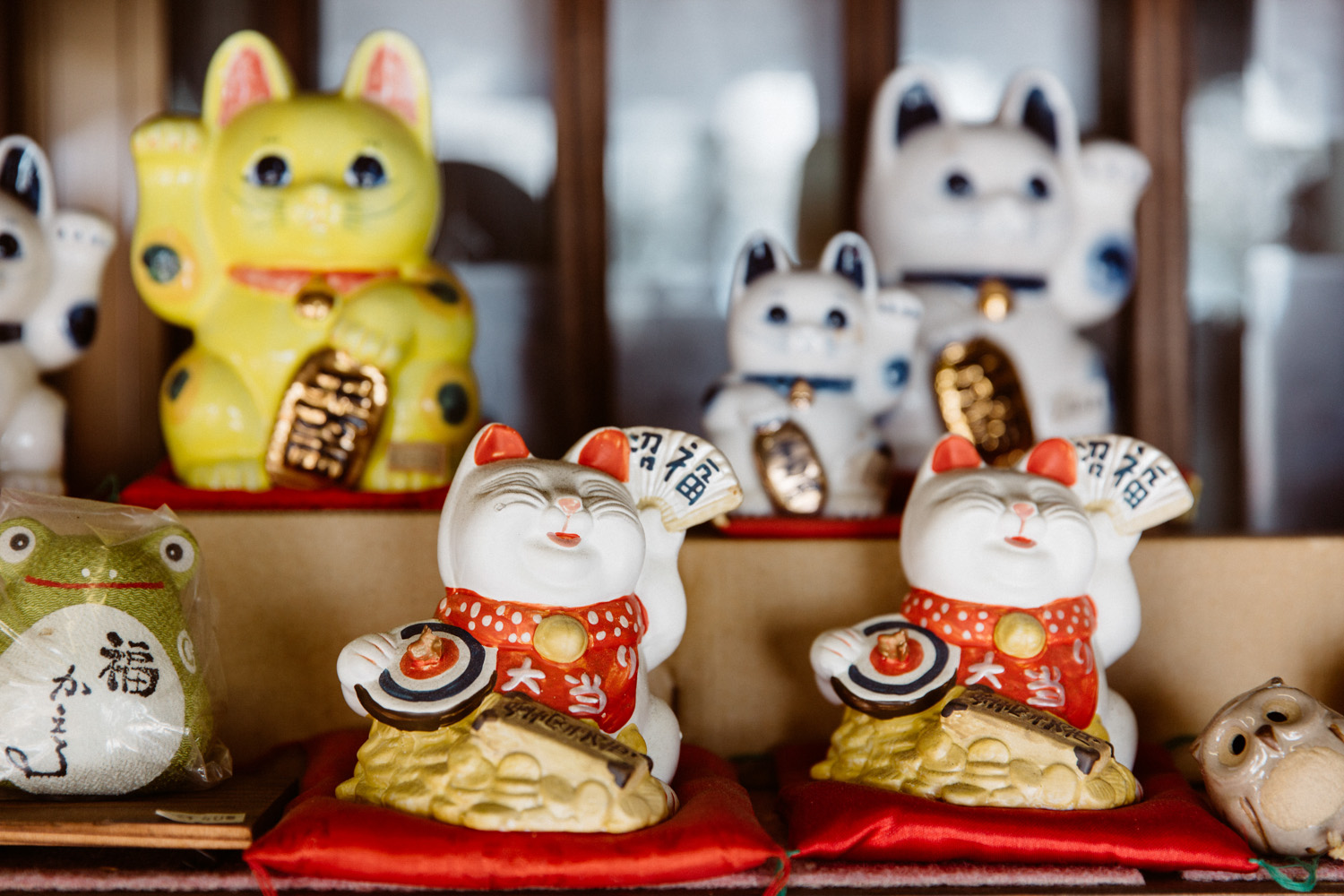
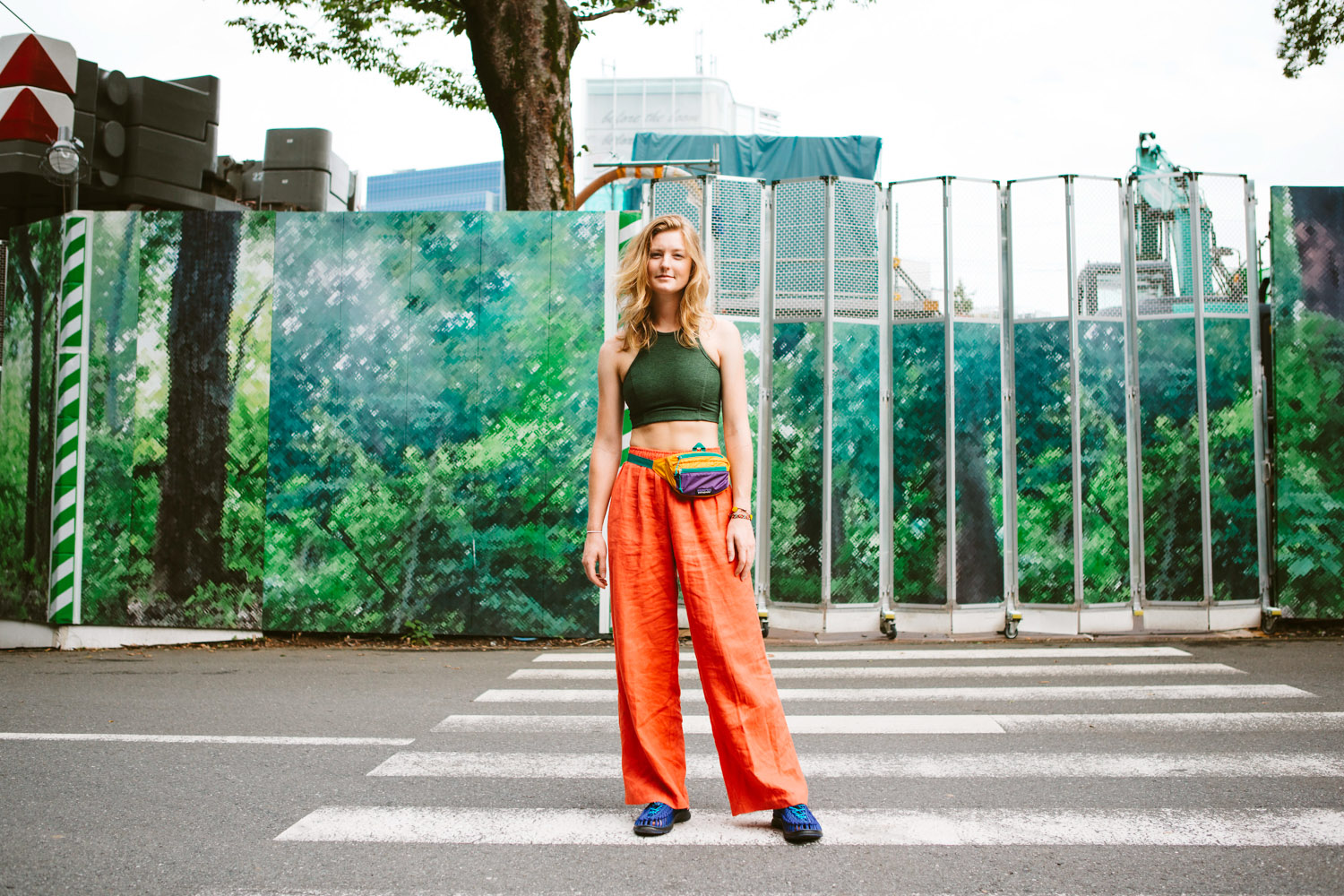
Photo of the author by Chelsea Parrett
Jules Davies is an outdoor lifestyle, fashion and travel photographer based in Portland, Oregon. You can view more of her work at julesville.com and find her on Instagram.








What a beautiful blog post Jules! Just yesterday my friend asked me what my dream was (I study film making with a minor in outdoor adventure leadership). I told him it was to bike around rural Japan and tell stories of the locals and their beautiful, slow, and patient way of life! I am a Zen practitioner so this way of living really inspires me.
Fast forward a couple hours and looks like my phone really does spy on me!
Anyways, am very glad for it. Amazing story, amazing post. Thank you so much!
If you ever want to talk adventure I’m your gal!
-Chloë